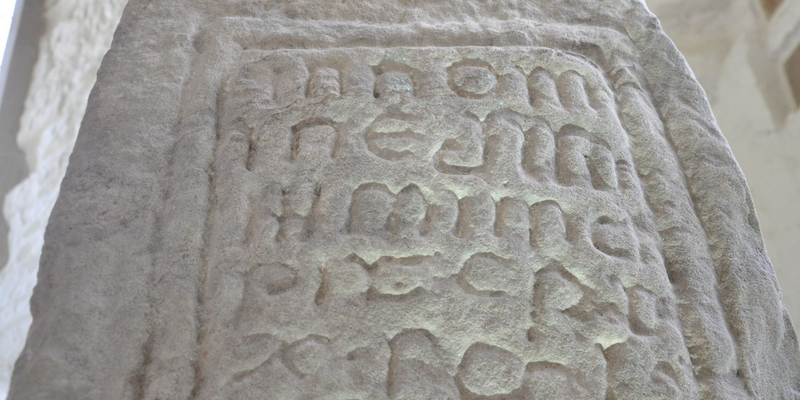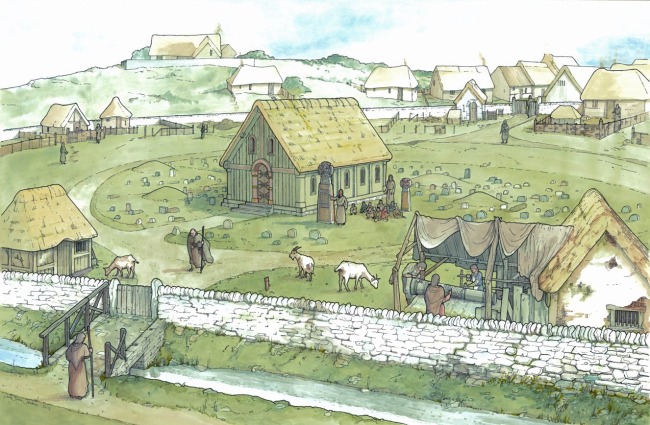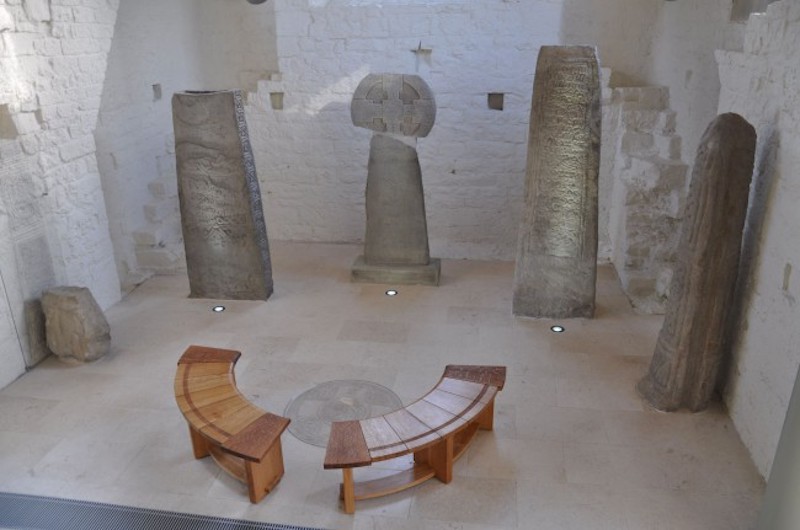The early Celtic church and stones

The Celtic Stones that are now exhibited in the rebuilt Galilee date from the 9th to the 11th centuries. They are nationally important as they are virtually all that remains of the early Celtic church that grew out of the monastic community founded by Illtud around the year 500.

Largely commissioned by and for the region’s kings, noblemen and abbots, the Stones were effectively ‘expensive and conspicuous gifts to the monastery’.
The Llanilltud collection
-
The Houelt Cross (centre) – probably dates from mid-late 9th century and is one of the most beautiful examples of a ‘wheel cross’ in Wales.
-
The Samson Cross or Illtud Cross (left of centre) – probably dates from the early 10th century and is believed to be dedicated to Saint Illtud.
-
The Samson Pillar (right of centre) – probably dates from the late 9th century. It was discovered by the poet, antiquarian and mason Iolo Morgannwg, when he was working near the church.
-
A Cylindrical Pillar (far right) – dates from the 10th- 11th centuries and is one of a pair, the other remaining only as a fragment (far left). The precise function of these pillars is unclear, but there is a long v-shaped groove cut down it which may have been a slot for supporting a decorative screen.
-
The shaft of a Pillar Cross (not shown) – dates from the late 9th or early 10th century. Considered stylistically ‘as one of the best of the Welsh monuments’.

A guide leaflet for the Stones is available in the Galilee Chapel.
A detailed history is found in Llanilltud, the story of a Celtic Christian Community by Philip Morris (Y Lolfa 2020) available for purchase in St Illtud’s Church Shop and from bookshops price £9.99